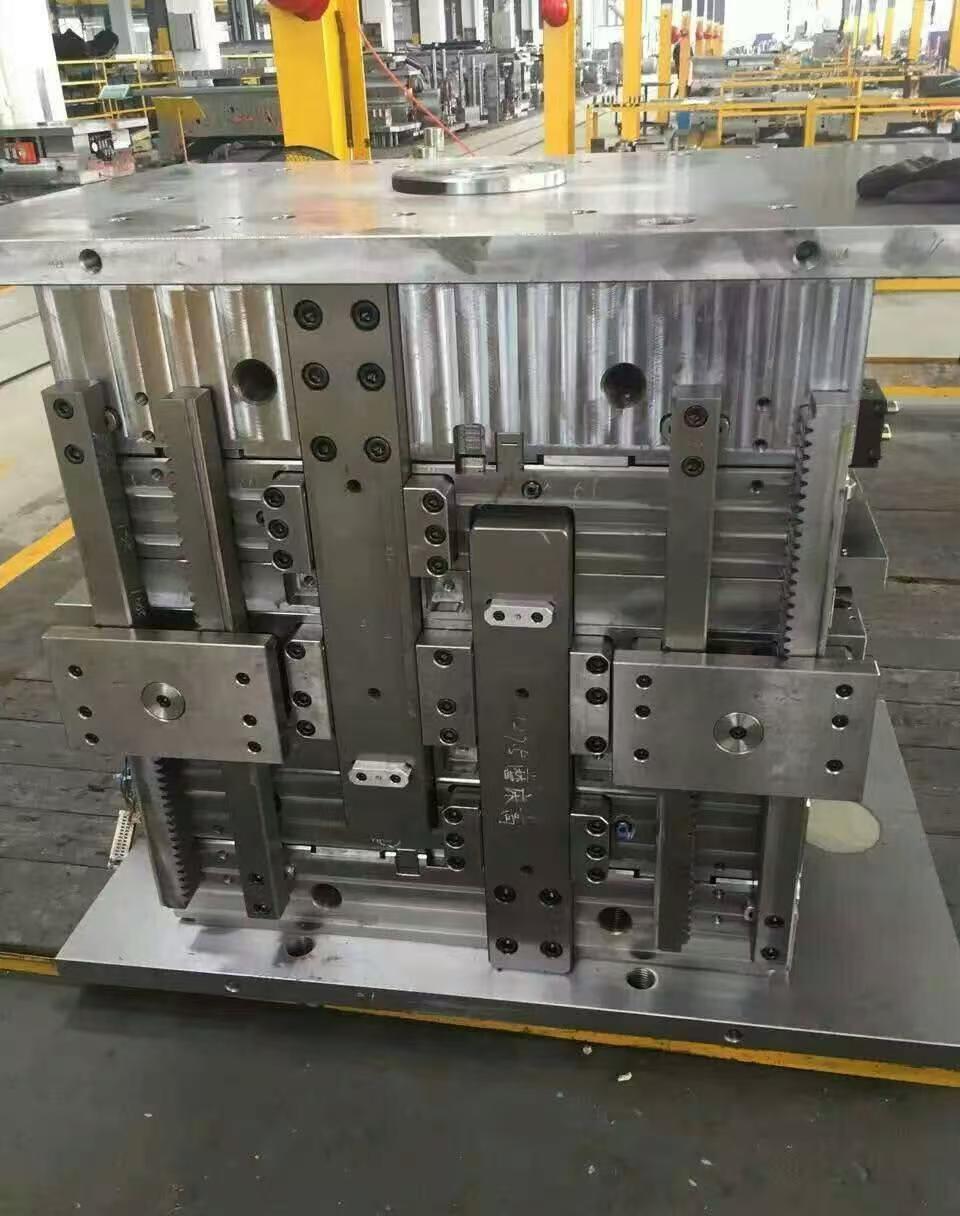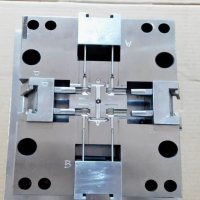Penyebab dan larutan garis perak, perubahan warna, riak permukaan dan kekasaran dalam produk cetakan injeksi
Penyebab dan solusi garis perak, perubahan warna, riak permukaan dan kekasaraninjeksi dicetakproduk
Cacat produk | Alasan yang mungkin | Larutan | |
| Pola perak pada produk | 1. Menekan peracikan plastik atau pelet plastik yang tidak rata, pemalsuan atau proporsi yang tidak tepat. 2. Plastik mengandung jumlah kelembaban yang tinggi dan memiliki zat volatil rendah yang dicampur. 3. Sejumlah kecil udara dicampur ke dalam plastik. 4. Perekat cair tidak mengalir terus menerus di rongga cetakan. 5. Ada kelembaban, minyak pelumas, atau penggunaan agen pelepasan cetakan yang berlebihan atau tidak patut pada permukaan cetakan. 6. Ketika cetakan memiliki knalpot yang buruk dan bahan cair berdinding tipis mengalir ke yang berdinding tebal, ia mengembang, dan zat yang mudah menguap menguap dan mencairkan kontak dengan permukaan cetakan untuk membentuk filamen perak. 7. Suhu cetakan rendah, tekanan injeksi kecil, kecepatan injeksi lambat, pengisian bahan cair lambat, dan pendinginannya cepat, membentuk lapisan tipis cahaya reflektif putih atau putih perak. 8. Waktu injeksi lem ditetapkan terlalu singkat. 9. Waktu penahanan tekanan ditetapkan terlalu singkat 10. Suhu plastik terlalu tinggi atau tekanan belakang terlalu tinggi. 11. Ada hambatan atau gerinda yang mempengaruhi laras atau nozzle. | 1. Kontrol formula proporsi plastik. Bahan campuran harus seragam dengan ketebalan untuk memastikan plastisisasi. 2. Keringkan plastik sebelum diproduksi untuk menghindari kontaminasi. 3. Kurangi suhu di ujung belakang silinder leleh atau tingkatkan suhu di ujung depan silinder leleh. 4. Saat menyesuaikan gerbang, pastikan mereka simetris. Tentukan posisi gerbang atau pertahankan seragam suhu cetakan. 5. Bersihkan noda kelembaban atau minyak pada permukaan cetakan dan gunakan zat pelepas cetakan secara wajar. 6. Tingkatkan desain cetakan, kontrol secara ketat proporsi dan formula bahan baku plastik sebanyak mungkin, dan mengurangi polusi bahan baku. 7. Tingkatkan suhu cetakan, naikkan tekanan dan kecepatan injeksi, dan memperpanjang waktu pendinginan dan waktu siklus cetakan injeksi. 9. Tingkatkan nilai pengaturan parameter untuk waktu injeksi dan nilai pengaturan parameter untuk waktu tekanan tahan. 10. Mulai dari nosel, kurangi suhu silinder leleh atau turunkan kecepatan sekrup untuk mengurangi tekanan belakang pada sekrup. 11. Check the barrel and nozzle. The gating system is too rough and should be improved and enhanced | |
| The product has changed color. | 1.Impurities are mixed into plastic and pigments. 2. Plastic and pigment pollution or degradation, decomposition. 3. The quality of the pigment is poor or it is not stirred evenly during use. 4. The temperature of the barrel and the nozzle is too high, causing the rubber compound to burn and change color. 5. The injection pressure and speed were set too high, causing the additives and colorants to decompose. 6. There is moisture, oil stains on the surface of the mold, or mold release agents have been used .. 7. The distribution of fiber fillers is uneven. When the product comes into contact with the solvent, the resin dissolves, leaving the fibers exposed. 8. Obstacles in the glue melt cylinder promote the degradation of materials. | 1.When mixing materials, avoid mixing in any impurities. 2. The raw materials should be dry and the equipment clean. When changing materials, they should be thoroughly cleaned to avoid leaving any excess materials. 3. Ensure the quality of the pigments used. When stirring, the pigments should be evenly adhered to the surface of the material particles. 4. Lower the temperature of the glue cylinder and the nozzle to remove the charred glue. 5. Reduce the injection pressure and speed parameter values to prevent the decomposition of additives. 6. Dry the moisture and oil stains on the surface of the mold and use the mold release agent reasonably. 7. Set the process parameters of fiber fillers reasonably and use solvents properly to ensure good plasticization and eliminate fiber exposure. 8. Pay attention to eliminating obstacles, especially when changing materials, strictly follow the step-by-step procedures or use the transitional material change method. | |
| Corrugations on the surface of the product | 1.The small gate causes the rubber compound to spray inside the mold cavity. 2. The flow channel is tortuous, narrow, with poor smoothness and insufficient supply of rubber compound. 3. The cut surfaces of the products are uneven in thickness, large in area and complex in shape. 4. Improper mold cooling system or low mold temperature. 5. Low material temperature, low mold temperature or low nozzle temperature. 6. The injection pressure and speed Settings are too low. | 1.Modify the gate size or reduce the injection pressure. 2. Modify the flow channel and enhance its smoothness to ensure sufficient supply of the rubber compound. 3. Design the product to ensure uniform thickness of the cut surface, or remove the protruding discs and raised lines on the product. 4. Adjust the cooling system or add molds. 5. Increase the temperature of the glue melt cylinder and the nozzle. 6. Increase the set values of the injection pressure and speed parameters. | |
| The product is rough | 1.The mold cavity is rough and has poor smoothness. 2. Plastic meat contains excessive moisture or volatile substances, or plastic pigments have decomposed and deteriorated. 3. Insufficient feeding, poor curing or poor fluidity of the plastic. 4. There is moisture and oil stains on the mold wall. 5. Excessive use of mold release agent or improper selection. 6. The molten material in the mold cavity does not fully contact the cavity wall. 7. Slow injection speed and low pressure. 8. The draft Angle is small, resulting in poor draft or low surface hardness of the product, which is prone to scratches and wear. 9. Uneven particle size or the mixture of immiscible materials can cause uneven color, silver streaks, etc. | 1.Polish the mold cavity again. 2. Dry plastic raw materials, use recycled materials reasonably, and prevent impurities from being mixed in. 3. Check the condition of the discharge port and the plasticization of the plastic material, and then adjust the parameters. 4. Clean and repair water leakage cracks or prevent water vapor from condensing on the wall surface, and wipe off oil stains. 5. Select a small amount of mold release agent correctly to clean the mold. 6. It can be improved by increasing the injection pressure, raising the mold temperature and increasing the feed. 7. Increase the injection pressure and speed Settings, raise the melt temperature, and increase the back pressure. 8. Modify the mold slope, select the ejector pin parameters reasonably, and operate carefully. 9. When mixing materials, pay attention to the uniform size of the material particles to prevent other materials from entering by mistake. |
Mould_Taizhou jiifeng Mould Co.,Ltd. (jfmoulds.com)
Komoditas mould_taichu jiifeng Mould Co.,Ltd. (jfmoulds.com)

Informasi terkait
Pengaturan Parameter Tekanan dan Aliran Cetakan Injeksi
2025-07-26
Pengaturan Parameter Tekanan dan Aliran Injeksi1.Setting suntikan ...
NowOn nama industri manufaktur presisi cetak penyihir
2025-06-29
NowOn nama industri manufaktur presisi molding magician hari ini...
Cetakan injeksi: analisis komprehensif dari pengerjaan presisi hingga beragam aplikasi
2025-06-30
Cetakan injeksi: analisis komprehensif dari pengerjaan presisi hingga penyelam...
Penyebab dan solusi pengelasan yang buruk dalam cetakan injeksi, retakan produk dan deformasi produk
2025-07-30
Penyebab dan solusi pengelasan yang buruk dalam cetakan injeksi, produk memecahkan ...
Dari terobosan teknologi hingga transformasi cerdas
2025-07-07
Dari terobosan teknologi hingga mol injeksi transformasi cerdas...
Dari prinsip ke aplikasi, pahami "shaping master" ini dalam industri
2025-07-16
Dari prinsip ke aplikasi, pahami "shaping master" ini dalam industri...





